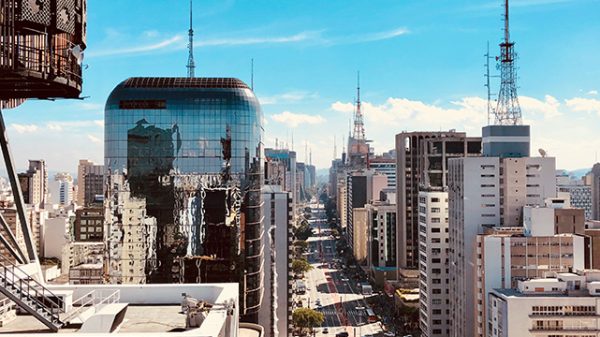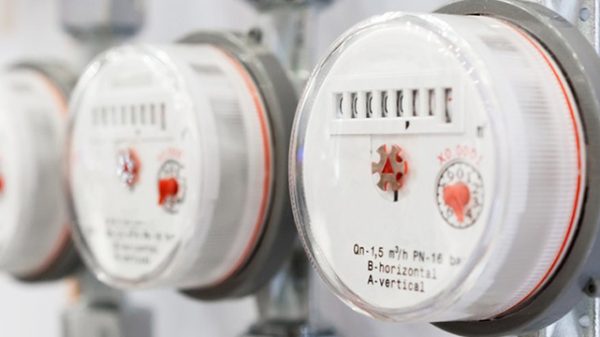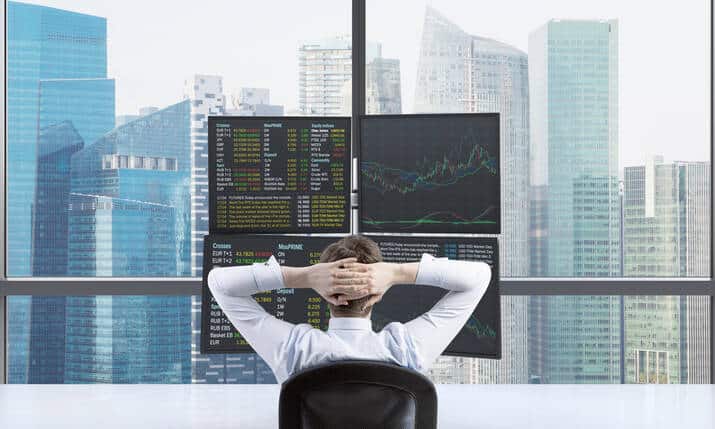Forex Trading 101: From Basics to Practical Insights
Let us start with an honest admission. The term “Foreign Exchange Trading,” or “Forex Trading” for short, can be intimidating when first hearing it. It conjures up images of lots of people sitting at their trading desks and staring at four or five computer screens. They are constantly on the phone and making lots of deals. The screens show many prices of the various foreign currencies at the main global financial centres, and large amounts of money are in play around the clock. As the prices of various currencies fluctuate, traders make and lose fortunes each day.
I am not sure how Forex Trading works. What is involved? It’s all very well for large City of London Funds to run a trading desk with millions in play, but how will I ever keep track of everything? I do not have much money, so how can I afford to get into Forex anyway? I heard somewhere that Forex Trading is a scam. Is this true? Is this even something I want to get involved with?This article will attempt to answer these questions and remove some of the mystery of Forex.
What is Forex Trading?
Before we consider what goes on in a large trading house in the City of London, let us start with the basics of Forex, and we will see that it applies to more aspects of life than we might have realised.
For example, let us consider George, a British man who wants to visit New York. He knows that he will need United States Dollars (USD) in his pocket to pay for taxis, meals, drinks, museum tickets, etc., so he goes to a Bureau de Change in London and buys USD 2,400.
The exchange rate is 1.25 USD to the British Pound (GBP), expressed in Forex language as GBP/USD = 1.25. We will explain this later.
This purchase costs George GBP 1,920, calculated as USD 2,400 divided by 1.25 = GBP 1,920. We are assuming there are no commission charges on these transactions.
But then, unfortunately, a new strain of COVID strikes in the Big Apple, and stops all flights to America. George cannot take his holiday, and he must stay in Britain. He eventually remembers the USD 2,400 sitting unused in his pocket. So once again, he goes to a Bureau de Change in London, and this time he sells these for USD 2,400.
Since buying USD 2,400, the USD/GBP exchange rate has changed to 1.20. George now receives GBP 2,000, which is GBP 80 more than the GBP 1,920 he initially spent.
In the end, George missed his holiday but made a GBP 80 profit from Forex trading.
This example shows that Forex trading can impact everyday life, even though George only intended to use the currency for a holiday.
Forex Trading Companies
Unlike George, Forex Trading Companies actively seek profit by purchasing and selling foreign currencies. They use computer programmes to help them do this. In addition, they tend to operate around the clock, with offices all around the globe. They also tend to operate on a large scale with large volumes. By doing this with trades of large volumes, they can make large amounts of money even when there has just been a minute rise or fall in a currency value.
These companies operate globally, taking advantage of opportunities to buy and sell currencies wherever people are willing to trade to profit from these transactions. That is to say that there are such opportunities almost everywhere, and these companies have developed a niche expertise in doing this.
However, any wise businessperson must consider that where there are opportunities to make profits, there is also the possible risk of making losses as well. Never dismiss or take this fact lightly. A single failed trade can wipe out a company’s capital, so take precautions. This is because loss-making events can happen more often than we might imagine.
For example, when the results of Britain’s Brexit Referendum finally became clear in late June 2016, the British Pound finished down more than 10% at USD 1.33, compared with USD 1.50 just after the polling stations had closed. GBP/USD had been = 1.50, but now it was = 1.33.
Implementing Stop-Loss Orders to Manage Forex Trading Risks
So, this was an example of a major currency losing more than 10% over a few days, which is a huge drop.
Now, if a particular company had been holding a lot of pounds, they would have taken a big hit. But let us say that a Japanese company was holding pounds, and their market had closed for the day by the time the pound’s fall occurred. How could they control this situation so that their losses did not mount up without their being able to take action?
The way to do this would have been to prepare for such an eventuality in advance. What companies typically do is to have computer programmes which contain a stop-loss order. This automated tool is activated to sell once the asset price has dropped to a predetermined lower level. It stops any further losses and thus minimises total losses to a level management has decided upon in advance, which they consider manageable. This exit strategy limits the company’s risk on any trade and is a crucial step in case the market moves against the company’s position. The key element here is deciding the correct lower level at which to activate the stop-loss order.
Expressing Exchange Rates – The Currency Pair
When our British tourist George bought and sold his USD, he did so at the exchange rates between the GBP and the USD. Forex Trading expresses these exchange rates as a “Currency Pair.”
When George bought his USD, the exchange rate was 1.25, and the applicable Currency Pair would be expressed thus:
GBP/USD = 1.25
The first currency mentioned is the GBP, representing the British Pound. This is known as the Base Currency, which always holds a value of 1.
The USD, representing the American Dollar, is the Quote Currency. It shows how many American Dollars are needed to equal one British Pound.
In this example, we need 1.25 American dollars to equal one British Pound. This tells us that the American Dollar has less value than the British Pound. Or, to put it another way, the British Pound is stronger than the American Dollar.
When George sold his USD after his trip was cancelled, the exchange rate was 1.20. The applicable Currency Pair would have been expressed thus:
GBP/USD = 1.20
Expressing Exchange Rates – The Pip (Percentage in Points)
A Pip is a measure of how the Forex market moves, and it refers to the fourth place after the decimal point on an exchange rate. Movements in currency pairs are commonly expressed in Pips, so we need to recognise this term.
Let us imagine that our friend George still needs to take a holiday, so he has decided to go to France. The exchange rate for the British Pound against the Euro is expressed as the currency pair GBP/EUR.
So, when he goes to the Bureau de Change, GBP/EUR = 1.1812
The Pip (the fourth place after the decimal point) is = 2
He goes to get his money but finds out that he has left his wallet at home. So, he decides to go to work and return the next day to buy those Euros. However, when George goes back to the Bureau de Change the following day, GBP/EUR = 1.1819
The Pip (the fourth place after the decimal point) is now = 9
The Pip on the first day was 2, and the Pip on the second day was 9. This tells us that the GBP/EUR has increased by 9 less 2 = 7 Pips, showing us that the Euro has become weaker by 7 Pips one day later.
What kind of advantage did George reap from the Euro becoming weaker by those 7 Pips? To calculate this, we multiply the 7 Pips by the 100 British Pounds he exchanged, which equals 0.07 British Pounds, or 7 pence.
This is not a huge amount, to be sure, and it will hardly affect George’s spending. However, on the currency markets, these small increments up and down are what can earn fortunes.
If Forex Trading company XYZ had invested one million (1000,000) British Pounds, then they would have earned a profit of 700 pounds. So, the amount earned by the company will depend on the amount invested, called its “Position Size.” George’s position size was 100 British Pounds, and Forex Trading company XYZ’s position size was one million British Pounds.
Here is a Position Size Calculator Template to help show various positions and the impact of movements in Pips.
An exception to the rule about the fourth decimal place applies to Pips when dealing with the Japanese Yen (JPY). Currency pairs involving the JPY are expressed with only two decimal places, making the Pip the second digit after the decimal point.
Who Decides What a Foreign Currency Is Worth?
All sorts of people can know all sorts of facts and information about economic trends. But who decides the value of a currency? When George bought his American Dollars, the Bureau de Change simply gave him a rate of GBP/USD = 1.25, which was the price he had to pay if he wanted to buy them. But why was it that price on that day?
The answer is that currencies are worth what the currency market says they are worth. And where is that market which decides this worth? Well, this market is the same one we discussed previously. Namely, the currency market which operates round the clock in the major financial centres such as Tokyo, London and New York.
The Forex Trading Companies in these major financial centres are in business to make money. They buy and sell currencies just like any other commodity, such as stocks, corn, gold, and other precious metals. A market is made when a company is willing to buy a certain currency at a certain price. At the same time, another company is willing to sell that same currency at that same price. Thus, they can agree to the trade, which establishes that currency’s value.
The Evolution of Currency Valuation: From Bretton Woods to Modern Forex Trading
However, interestingly, this was not always so. The Bretton Woods Conference of 1944 established the International Monetary Fund and also decided upon many rules about how the world’s economic system would function after World War II. The Final Act of the Conference incorporated the following agreements and recommendations:
An adjustable pegged Foreign Exchange market would tie exchange rates to gold. Governments were expected to modify these rates only to address a “fundamental disequilibrium” if it occurred. Thus, for example, the GBP/USD was equal to 2.80 for over 20 years until the British government devalued the GBP in 1967. Then, the GBP/USD was equal to 2.40 for four years until the United States (US) abandoned this system in 1971. As it was possible that exchange rates thus established might not be favourable to a country’s balance of payments position, governments had the power to revise them by up to 10% from the initially agreed level without objection by the IMF. Member countries pledged to convert their currencies for trade-related and other balance of payments transactions.This is relevant because the modern industry of Forex Trading could only take off after the United States (US) unilaterally cancelled the direct international convertibility of the USD to gold in 1971. The US took this measure, along with others, to address severe inflation. Afterwards, the Forex market became necessary to determine each currency’s value, with rates fluctuating constantly. As soon as this happened, companies noticed the opportunity to make money by buying and selling on those movements.
The Individual Forex Trader – Is It A Good Idea?
We have already discussed the basic principle of Forex Trading. Namely, it is all about buying a currency at one price and hopefully selling it at a higher price. This is what George managed to do, although we realise that he was not trying to gain a profit. It just turned out that way for him. But these days many individuals are setting out to trade in Forex on their own account.
But here is where a note of caution might be the best way forward. Is this a wise step for the individual? Who can tell whether a particular currency value will rise or fall at any given time in the future? For a start, all sorts of factors influence and can be responsible for currency movements. For example these are just a few of them:
Local economic data such as interest rates and employment figures. The prospects of an economy in the future, considering past investment decisions and policies. An upcoming general election with a change of government may lead to a change of economic policies.We also need to bear in mind that all these factors, and many others as well, are affecting currency movements simultaneously. Depending on the strength of each individual factor, one may dominate and have more influence than another. Sometimes, these factors might be pulling in different directions at the same time.
The Complexities and Risks of Forex Trading
For example, if Norway is experiencing poor economic growth, we might expect the Norwegian Krone (NOK) to fall relative to other currencies. However, if, at the same time, the government in Oslo puts up interest rates, this will make Krone more attractive to investors, and thus, we might also expect Krone to rise.
Now, this means that predicting whether a currency might be heading up or down is a very difficult business. In fact, those Forex Trading Companies that we already mentioned have teams of economists who are constantly monitoring all this data and all these situations.
Thus, the Forex Trading Companies are the experts in this field. Frankly, many of us don’t know what is going on at any given time. If that is the case, Forex Trading can be like gambling, with the well-resourced big companies having the advantage over the individual. And so it may simply not be the right thing for some people. The risks combined with the lack of knowledge might simply be too great.
It is not the purpose of this article to suggest alternative investment opportunities, but something safer and less volatile might suit some people better, depending upon their circumstances. However, if someone wishes to pursue the Forex trading field, they will need knowledge in certain important areas, and they will also need to be aware of some relevant requirements.
The Individual Forex Trader – Knowledge
It is one thing for a well-resourced bank or trading company to enter the Forex Trading market. They have the resources to examine and analyse economic data to understand what is happening. They also have experienced staff who have been doing this for years.
However, in recent years the internet and the PC have combined to allow individuals to become Forex traders on their own account. These individuals are often operating from their own homes. They might be doing this as their full-time job or simply dabbling in it to make a bit of money on the side, hopefully. However, since the major operators are the Forex Trading Companies, it will make sense for the individual, beginning as a trader, to learn from these companies and others trading in the market.
Therefore, individual traders must take steps to inform themselves about economic trends so that they can understand the market he is entering. There are also a few practical requirements that the individual trader needs to obtain and some technical aspects that he will need to learn about.
The Individual Forex Trader – Requirements
Apart from economic knowledge, what are these practical requirements that the individual Forex Trader needs to have:
The Forex Broker
The first thing our trader needs is a Forex Broker. This is simply a financial services company which acts as a middleman between himself and the Forex Market. It is how the individual will place his currency trades.
There are many Forex brokers available online, and there are also many YouTube videos which suggest how to pick one. At the end of the day, it’s a bit like choosing a bank. The trader needs the one which will meet his various needs.
Registration and Regulation
However, it’s crucial to recognise that not just any Forex broker will suffice. The trader must choose one that is registered and regulated in a reputable country they are familiar with.
So, for example, the United States or the United Kingdom. Avoid any broker that is not regulated. Also, steer clear of brokers registered and regulated in offshore territories. Something like the Cayman Islands, as these locations offer less regulatory oversight compared to other regions. This means that if the Cayman Islands broker were to go bankrupt, the individual would not have the same safeguards against losing his money.
Competitive Spreads
To benefit from better trading conditions, seeking a Forex broker who offers competitive spreads is important. The competitive spread is the ask price less the bid price. The ask price is the price at which the market will sell a specific currency pair position. The bid price is the price at which the market will purchase a specific currency pair position.
Competitive spreads reflect a more competitive pricing environment, where brokers strive to attract traders by offering cost-effective trading conditions. In essence, a competitive spread covers the broker’s compensation and liquidity costs. Tight or competitive spreads benefit traders by lowering transaction costs, enabling more efficient and cost-effective trade execution.
The Trading Platform
When you finally choose a broker, this broker might have a trading platform attached to their web page. This usually comes as part of the package. However, some analysts believe that these attached trading platforms are not as good as a separate trading platform available from a specialist source. This comes about because the broker is already making money from buying and selling and has no special incentive to provide a top-quality trading platform.
The point here is that the trader has their money in play. Thus, a good quality trading platform can certainly enhance the trading experience by providing a good environment to make it easy to make trades.
For example, he will want it to display all the relevant information he requires, such as useful tools, indicators and ratios. Linking the trading platform directly to the Forex broker will also help.
Without this feature, the trader will have to switch back and forth between his trading platform and his broker, which will be cumbersome.
For an interesting starting point, consider this YouTube video, a tutorial about a Trading platform called TradingView.
The Stop Loss Limit
We had previously mentioned that a Forex Trading company would not want to risk too much capital on any one investment. Therefore, it would set a limit on the amount it could lose. This was called its stop loss limit for that position. It is only wise for the individual trader to also set a similar stop loss limit on his personal trading. This stop loss limit is often expressed in Pips, and this is a judgment call that the trader must make.
Many traders look at the past movement on a currency pair and set the stop loss at a certain level of Pips which they feel comfortable with. Then, they decide what percentage of their total investment they are willing to lose in a worst-case scenario. This is called the Risk %. The Position Size Calculator will then be able to calculate how much the trader should invest in that currency pair. So, as a result, they only risk losing that % of their total investment with that designated stop loss level.
Leverage
Let us say that once our trader has learned about Forex, he might wish to increase the size of his trades. But if he lacks the funds to make bigger trades, this would normally limit his ambition. However, there is a way around this, and this is called leverage.
Leverage is the use of “borrowed funds” so that one can make bigger trades. Some brokers allow the trader to “borrow” these funds on their broking account. This sounds simple, but there are a few key points to note.
There is no actual transfer of funds with leverage. To this extent the borrowing is not like a bank loan. Rather, the broker gives the authority for the trader to invest more funds than he has on hand. When the trader increases his position size using this leverage, note that he must carefully use a stop loss limit. This is because the leverage agreement allows them to invest more funds than he has. But, also the leverage agreement will not allow him to lose more than his original investment. If he does lose more than his original investment, the broker will immediately make a margin call for the trader to invest more money. Because a leverage agreement will allow our trader to invest more funds than he has, each Pip will have a greater overall effect. The reason is – it is being applied to a larger position. Therefore, there is a chance to profit more if the Pip rises. However, the flip side is that there is also the chance to make a greater loss if the Pip falls.For example, maybe our trader was previously able to able to invest 10,000 British pounds of their own money into a GBP/EUR currency pair, and the Pip went up by 10 points. This would earn our trader ten pounds of profit, calculated as 10,000 pounds x 0.001 = 10 pounds.
Impact of Leverage on Forex Trading Profits and Losses
However, if the Pip went down by 10 points, this would result in a loss of ten pounds, calculated as 10,000 pounds x -0.001 = -10 pounds.
(We should note that investing all of one’s funds into just one position is probably a very bad strategy. But we are just looking at a theoretical example).
On the other hand, let us imagine that our trader contacted his broker and obtained an authorisation to leverage his trades on a 10:1 basis. As before, he has his own 10,000 British pounds to invest, and his broker is now allowing him credit to make trades up to 100,000 pounds.
Let us imagine that our trader was to invest the whole 100,000 into that same GBP/EUR currency pair. Meanwhile, the Pip went up by those same 10 points. This would now earn our trader 100 pounds of profit, calculated as 100,000 pounds x 0.001 = 10 pounds. Following the same logic, if the Pip went down by 10 points, this would result in a loss of 100 pounds. And let’s not forget that the broker will not allow the trader ever to lose more than his original 10,000 British pounds.
Is Forex Trading A Scam?
So far, we have discussed Forex Trading companies on their own account, and we have also discussed individual traders who invest in foreign currencies on their own accounts.
However, some people might have heard that Forex had something to do with a scam.
The truth of this is that there have been companies in the past, usually based in less regulated or less accessible locations, which said they were investing in Forex. They were offering a piece of this Forex Trading action to members of the public. Smooth-talking telemarketers usually made these offers, and then people sent their money and waited to become rich.
The companies never clarified whether they invested any of this money in foreign exchange or anything else. However, it became evident that withdrawing the investment or getting any money back was extremely difficult, if not impossible. Whenever someone tried, the smooth-talking telemarketers would offer all sorts of reasons why it couldn’t be done. In short, it had all been a scam to part gullible public members with their money. A case of Caveat Emptor.
So, none of this had anything to do with Forex trading. Apart from the fact that the scammers were saying that they were investing in Forex, which was probably untrue. But we have mentioned all this to show that any scam enterprise like this obviously has nothing to do with real Forex Trading of the type mentioned so far in this article.
Final Thoughts
Forex trading offers the opportunity to make money by investing in the Forex markets. It is similar to investing in the stock market: with a sensible strategy and hard work, it is possible to make money. However, it is not a get-rich-quick scheme.
On the contrary, if one does not know what one is doing, it is actually a great way to lose money. Therefore, Forex trading is not for everyone. There is a lot of technical detail to understand. Hence, it will probably help a lot if our prospective trader has a bit of a flair for mathematical calculations. But anyone who is serious about getting into Forex trading should approach the subject slowly and carefully.
`); } else { $(‘.blur’).css({ ‘background’: ‘linear-gradient(95deg, #4e4e4e 25%, #000 45%, #bbb 75%, #FFFFFF 100%) 98%/200% 100%’, ‘text-transform’: ‘inherit’, ‘-webkit-background-clip’: ‘text’, ‘background-clip’: ‘text’, ‘-webkit-text-fill-color’: ‘transparent’ }) $(“.wpb_content_element”).append(`
Want to read more?
Click on the button below to access all premium content articles by purchasing one of our educational packages
GET PREMIUMWant to read more?
Click on the button below to access all premium content articles by purchasing one of our educational packages
GET PREMIUMThe post Forex Trading 101: From Basics to Practical Insights appeared first on FinanceBrokerage.























